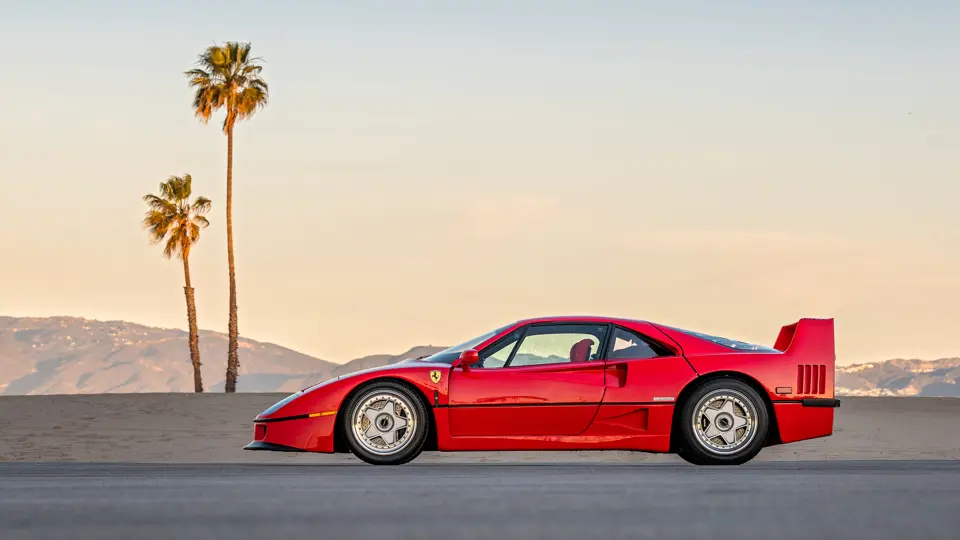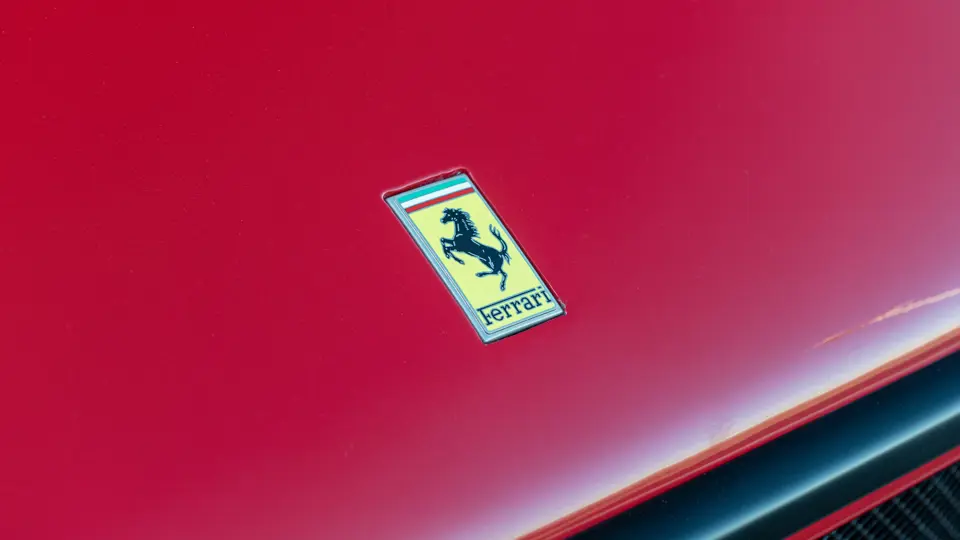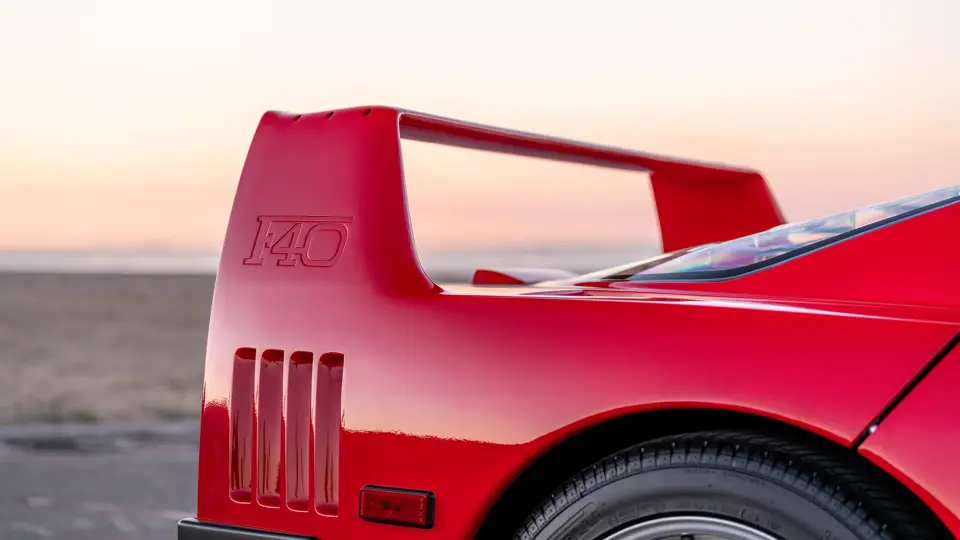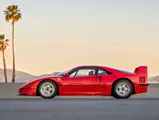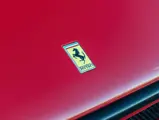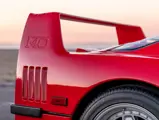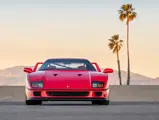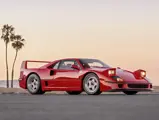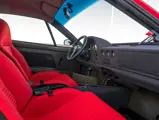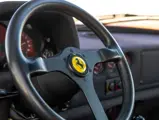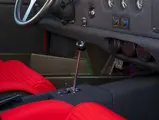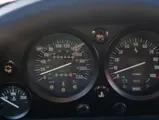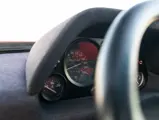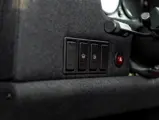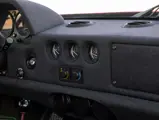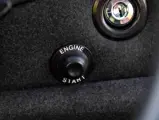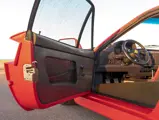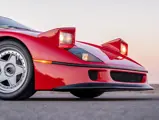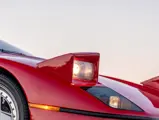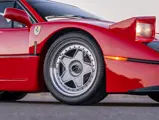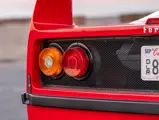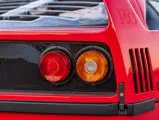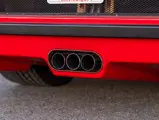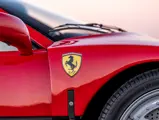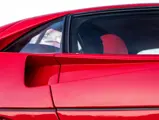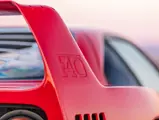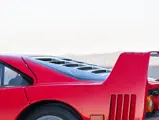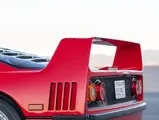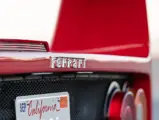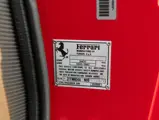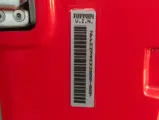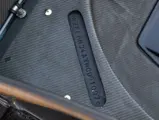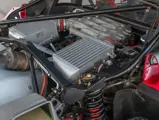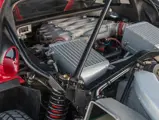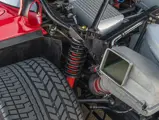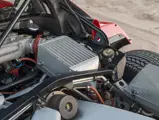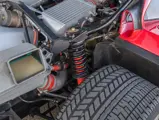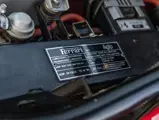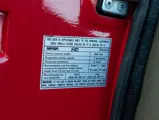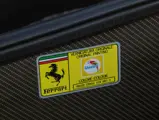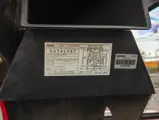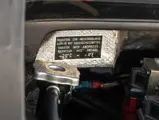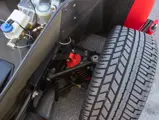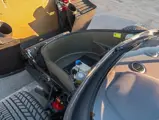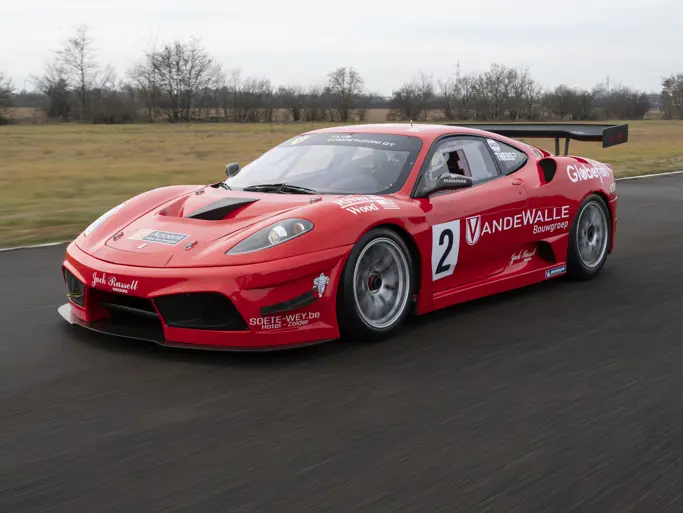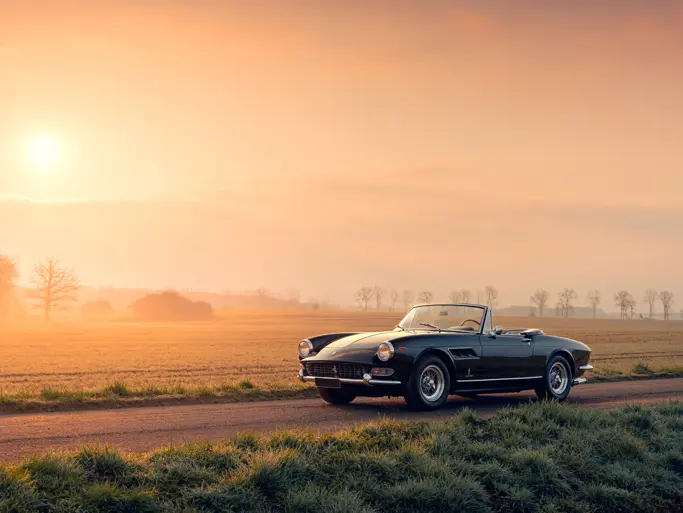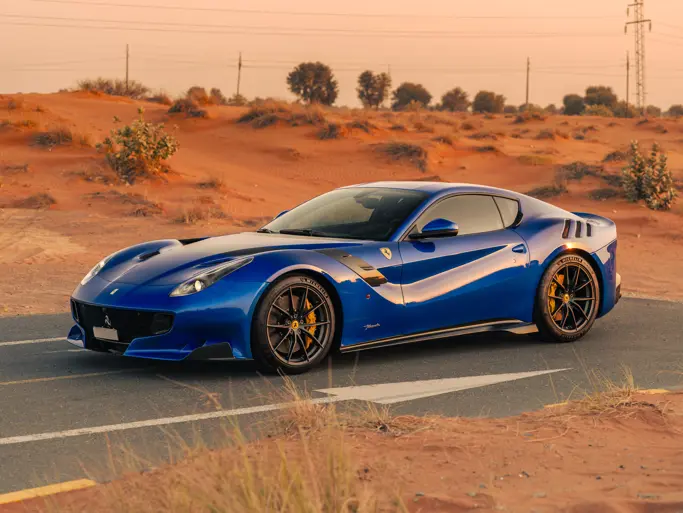
1992 Ferrari F40
{{lr.item.text}}
$3,855,000 USD | Sold
{{bidding.lot.reserveStatusFormatted}}
- One of just 60 examples delivered to the United States in 1992, and 213 total examples specified for the US market
- 9,447 miles displayed on odometer at cataloguing; longtime California car originally sold at Monterey Ferrari
- Certified by Ferrari Classiche to retain its numbers-matching engine and gearbox
- Benefits from a major dealer service completed in February 2022
- Offered with complete toolkit and owner’s manuals and documented with Ferrari Classiche Red Book, window sticker, Ferrari Classiche maintenance booklet, and service invoice
- The last Ferrari supercar developed under Enzo Ferrari
Engineered to celebrate the 40th anniversary of Maranello’s first model, the 125 S, the F40 to this day remains one of Ferrari’s most captivating and impressively specified supercars. The model was originally conceived to be an FIA Group B competitor, and it was consequently developed from the superlative 288 GTO to take on the likes of the Porsche 959. Enthusiasts can be grateful that the F40’s nearly stillborn gestation continued forward even after the racing class was canceled. Rather than scrap the program entirely, Ferrari used the five initial 288 GTO Evoluzione examples as the basis of a new 40th-anniversary road car that would be the last supercar devised under Enzo Ferrari’s stewardship.
As it was designed for competition purposes, the F40 featured a race-developed steel tube-frame chassis with four-wheel double-wishbone independent suspension, coil-over Koni shock absorbers, and four-caliper ventilated disc brakes. Leonardo Fioravanti’s coachwork design, which was aerodynamically perfected in Pininfarina’s wind tunnel, was built with paneling woven of Kevlar and carbon fiber, reducing the curb weight by approximately 20 percent while simultaneously tripling the car’s structural rigidity.
The 288’s twin-turbocharged V-8 was bored to displace 2.9 liters and equipped with IHI turbochargers and Behr intercoolers; this powerplant was married to a five-speed transaxle actuated by a gated shifter. The resulting performance was nothing short of astounding, as the type F120 040 engine developed 478 horsepower and 425 pound-feet of torque, capable of launching the F40 to 60 mph from standstill in just 3.8 seconds and achieving a top speed of 201 mph (thereby eclipsing the Porsche 959 and Lamborghini Countach).
Cosmetically, the F40 amply reflected its basis in racecar development, with the lightweight body echoed by numerous interior considerations. Weight was further reduced with the use of cloth upholstery on plastic-composite racing seats, pull-strap door releases, drilled pedals, and Perspex windows.
Publicly introduced at the 1987 Frankfurt Motor Show, the F40 was initially earmarked for a low production run of 400 examples, but skyrocketing customer interest prompted Ferrari to ultimately build 1,315 cars. The commemorative supercar was initially only available in Europe, and early examples were built without catalytic converters or adjustable suspensions. In 1990, deliveries of a more developed version began in the United States; these were standard-equipped with air-conditioning and catalytic converters. By the model’s production conclusion in summer 1992, just 213 examples had been specified and delivered to America, and it remains notable for being the last supercar developed under the watchful eyes of Il Commendatore himself, the legendary Enzo Ferrari.
Occupying such an important position in Maranello’s supercar lineage, it is hardly surprising that many F40 examples were initially purchased by astute collectors and largely restricted to showroom viewing and concours exhibition. Relatively few cars were driven in anger on a track, but a handful of drivers were lucky enough to experience the F40 under such conditions.
Case in point, five-time Le Mans champion Derek Bell was allowed to push the car’s limits during a test drive for Classic & Sports Car magazine conducted during the mid-2000s. His verdict: “It’s just magnificent…This is a car to make your hair curl. The power delivery is sensational, and I love the way the turbos come on with such a rush. Very quickly the situation changes from neutral understeer to amazing oversteer, but it’s all superbly predictable.”
But the endorsement of a pedigreed championship driver was no requirement for the F40 to attract an ardent fanbase, as illustrated by an entire generation of teenage gearheads who proudly displayed posters of the 40th anniversary supercar on their walls. Many of these same children have grown up to be today’s respected collectors, and their continued devotion to the F40 testifies to just how iconic the seminal model truly is.
This desirably documented and modestly driven F40 is one of the finest examples to be publicly offered in recent memory. One of just 60 examples delivered to the United States in 1992, chassis number 91097 completed assembly in September 1991, finished in Rosso Corsa and trimmed with Stoffa Vigogna (vicuña cloth) seat upholstery. According to a copy of an original window sticker on file, the car was shipped for import to Newark, New Jersey, and an entry in the F40’s warranty booklet demonstrates the car was distributed for retail to Monterey Ferrari in Seaside, California, just north of Pebble Beach.
Officially sold in October 1991, the Ferrari was delivered in January 1992 to the first owner, Putra Masagung of Hillsborough, California. The impressive supercar passed through one other California-based ownership over the following 13 years before being acquired circa late 2005 by another enthusiast in California. Throughout this period, the F40 enjoyed steady maintenance and gradually accrued occasional miles before being sold to the consignor more recently.
In February 2020 the F40 was issued certification from Ferrari Classiche, including a Certificate of Authenticity and a Red Book that clarifies the car desirably retains its major original mechanical equipment, including engine and gearbox, and is equipped to proper factory specifications. The Ferrari was also issued a Classiche Libretto Manutenzione, a Classiche-issued maintenance log that is stamped with a factory-conducted service at that time. In preparation for the current offering, the supercar was serviced in February 2022, as reflected by an invoice on file from Ferrari Los Angeles. This attention included a belt service, a rebuild of the fuel injectors and alternator, and a re-sealing of the valve covers with new gaskets and rings. The phase sensors were replaced, the wheels were re-torqued, and a new fuel filter and spark plugs were installed.
Still benefiting from the gentle care of four faithful custodians, this F40 displays the preservative effects of many years in California, and it displays 9,447 miles at time of cataloguing. It is fitted with a Tubi exhaust (though still accompanied by the original factory unit) and shod with correct Pirelli P-Zero tires.
The celebrated Ferrari presents very well cosmetically, and the Red Book certification assures the car is mechanically numbers-matching. Accompanied by a toolkit in pouch, owner’s manuals in the familiar beige leather pouch, and a can of factory-branded fix-a-flat, it is documented with the window sticker copy, warranty booklet, Ferrari Classiche Red Book, and an invoice for the recent servicing. This wonderful F40 should command the attention of any supercar enthusiast or marque aficionado, offering a future highlight to any collection of advanced top-shelf sports cars.




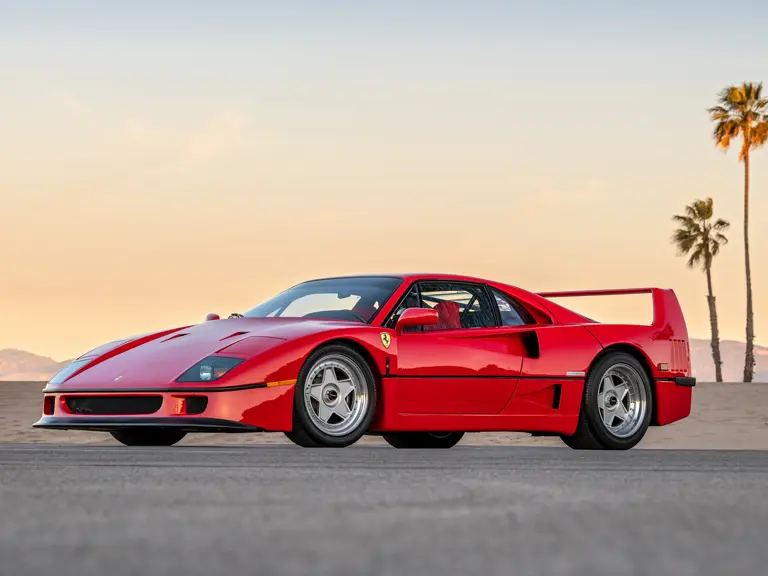
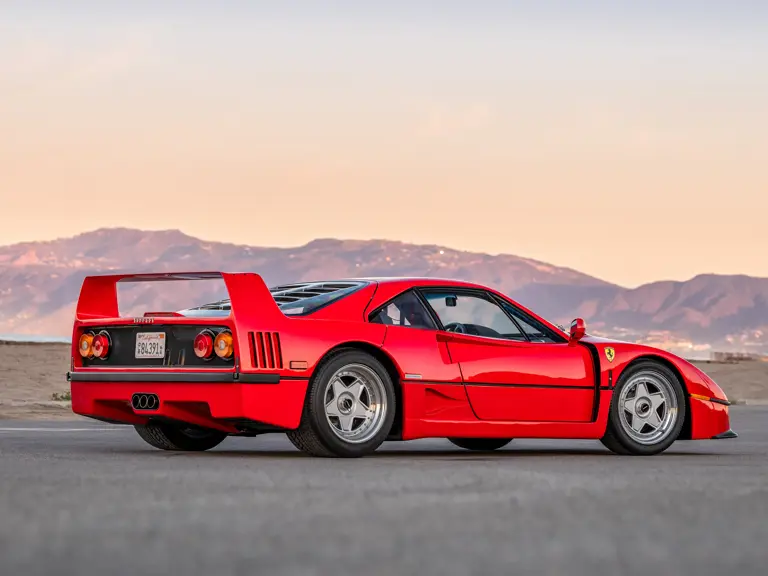
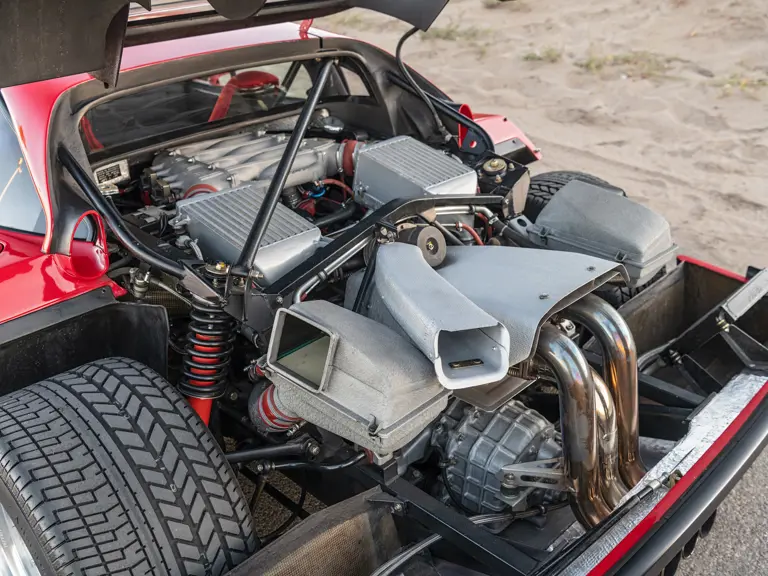
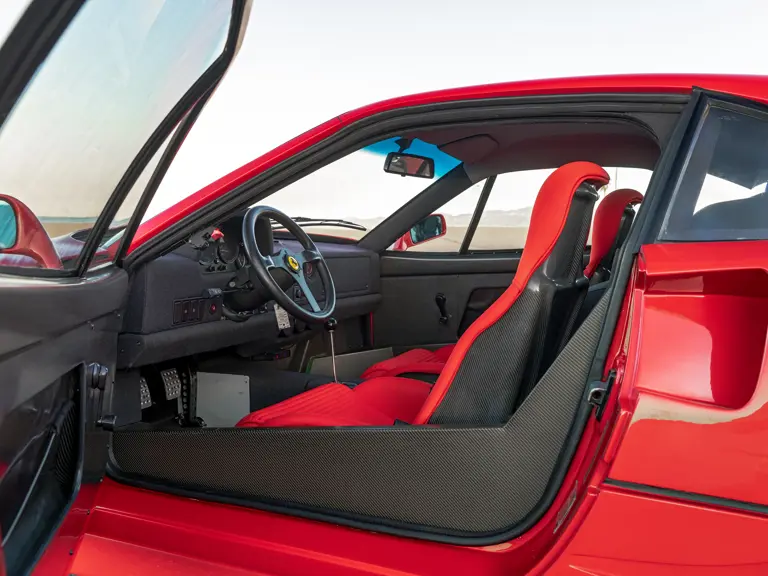
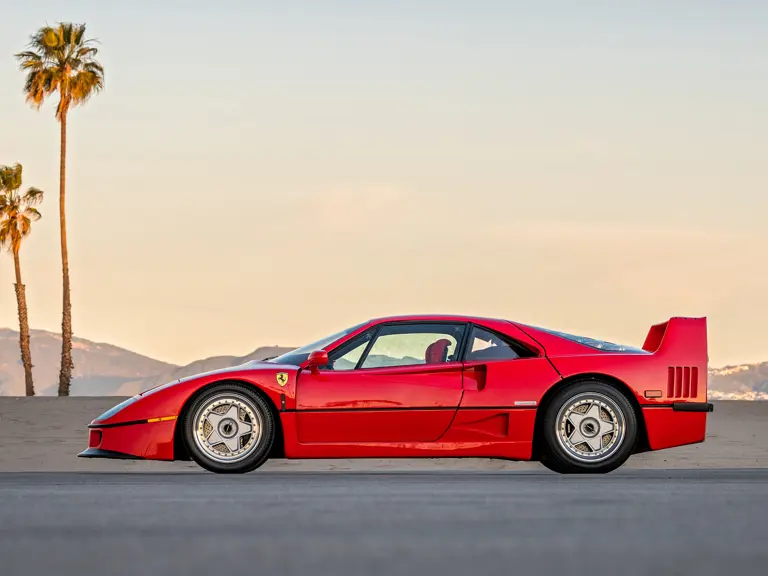
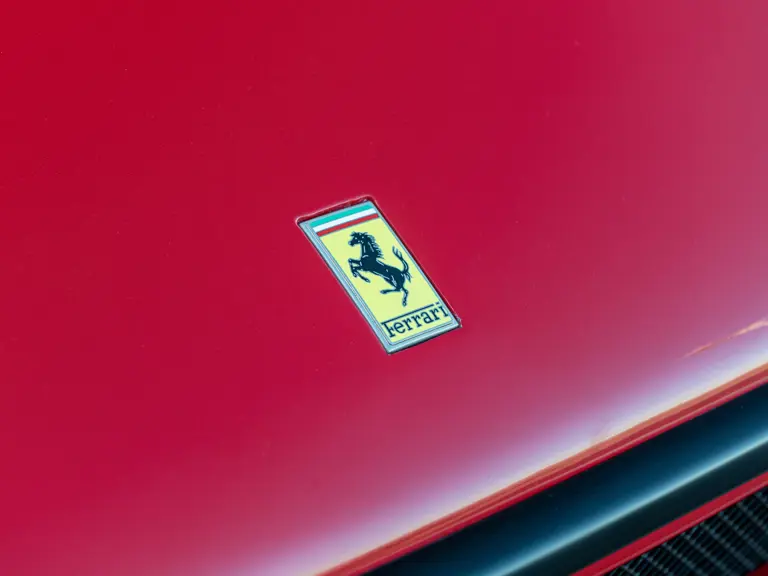
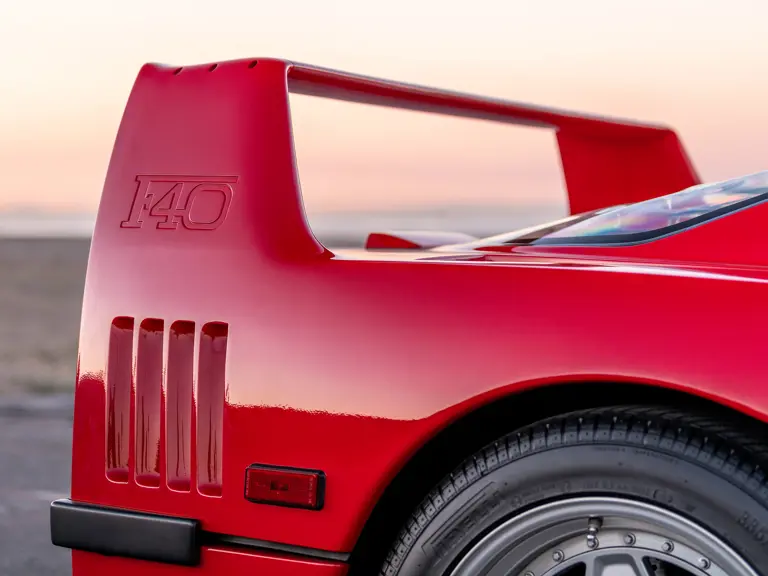
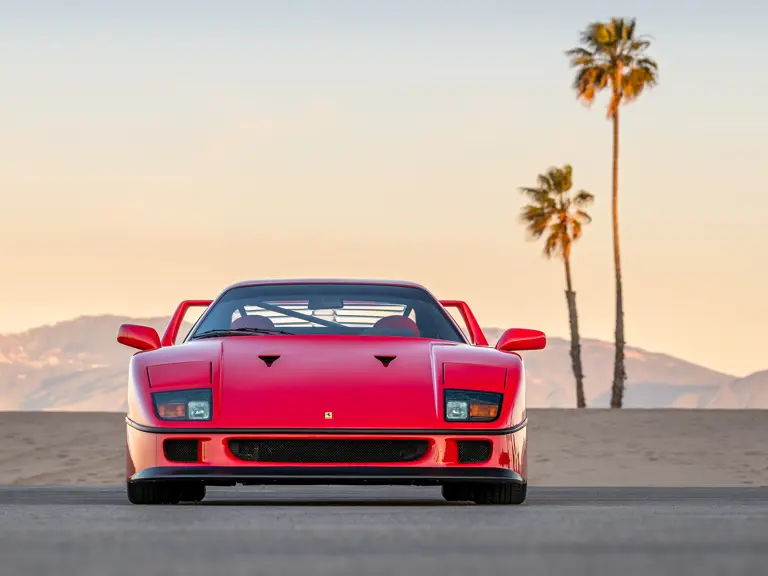
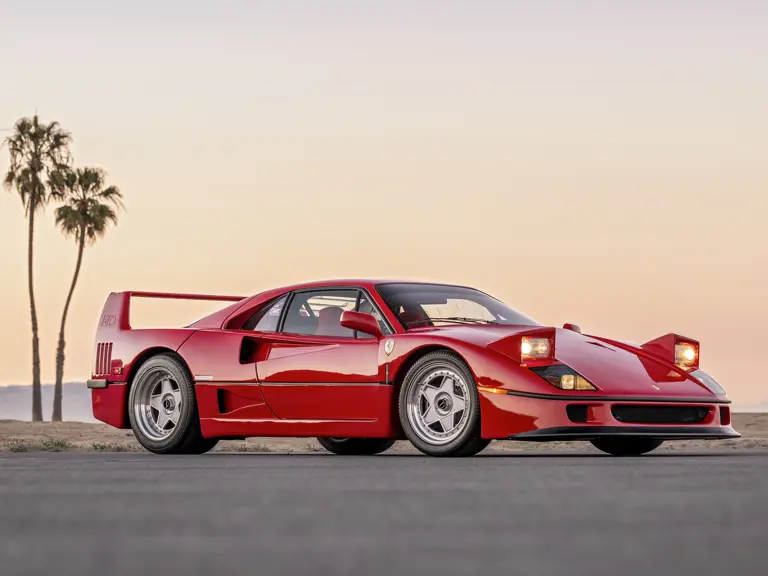
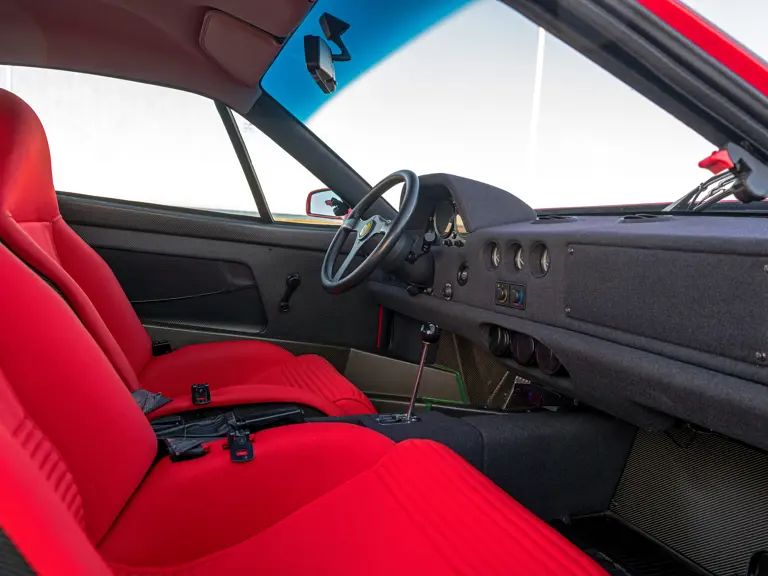
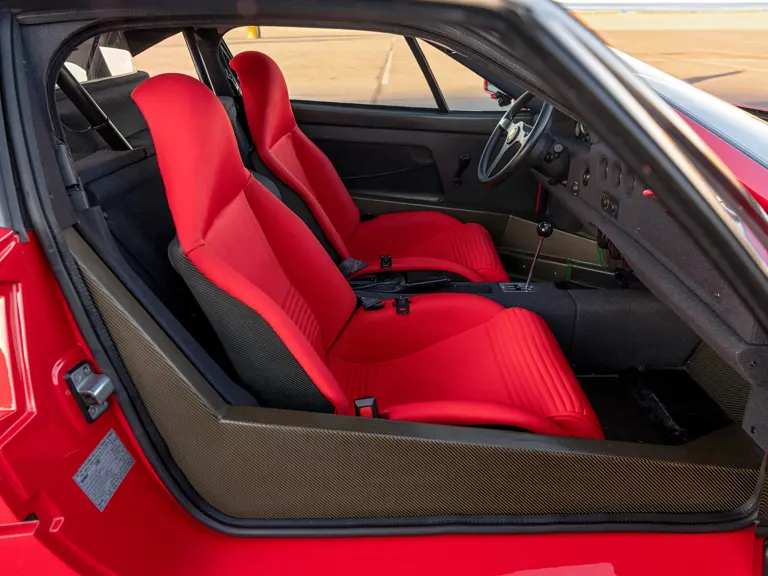
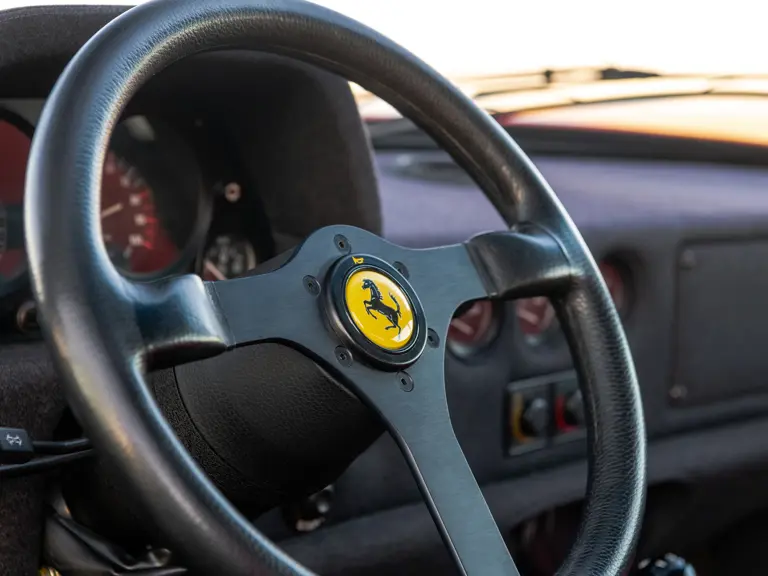

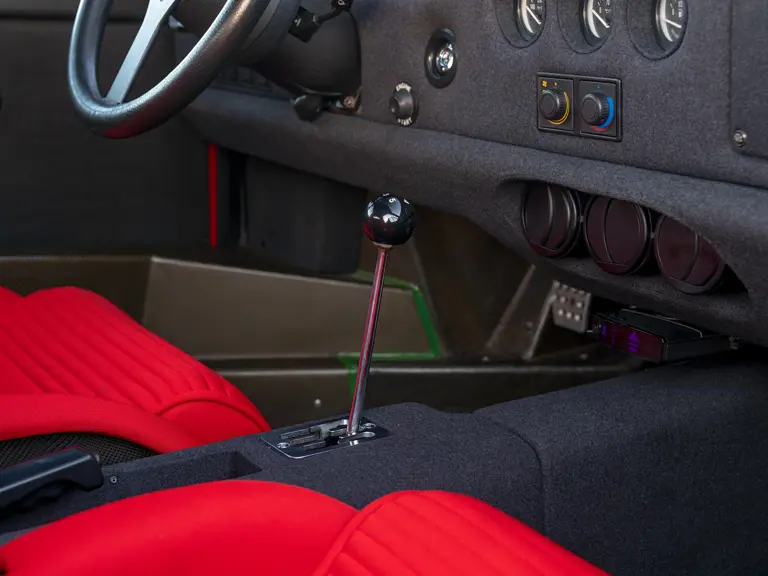
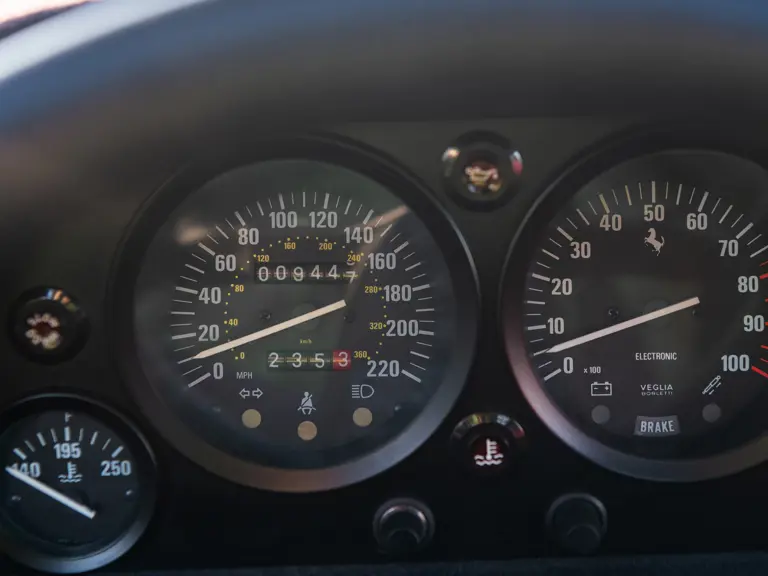
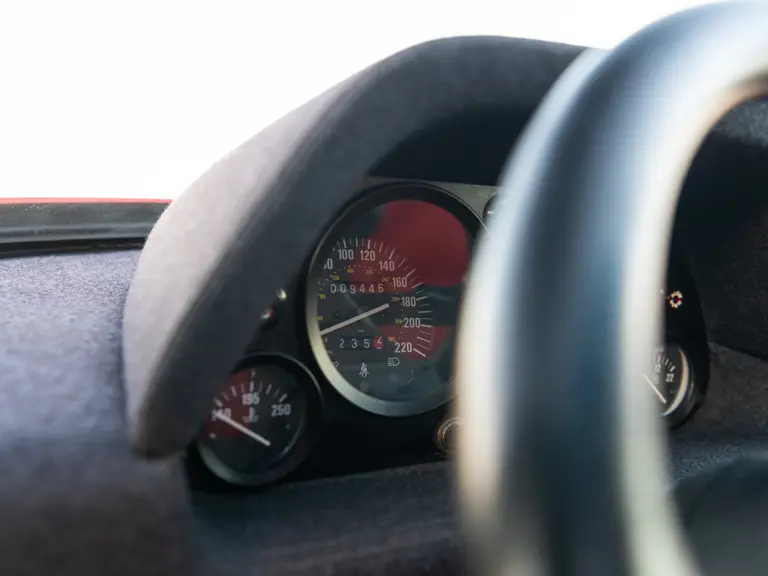
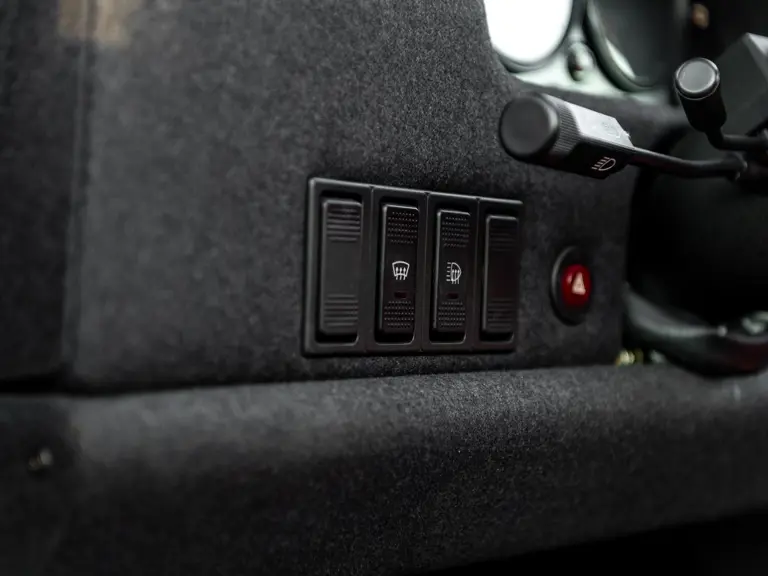
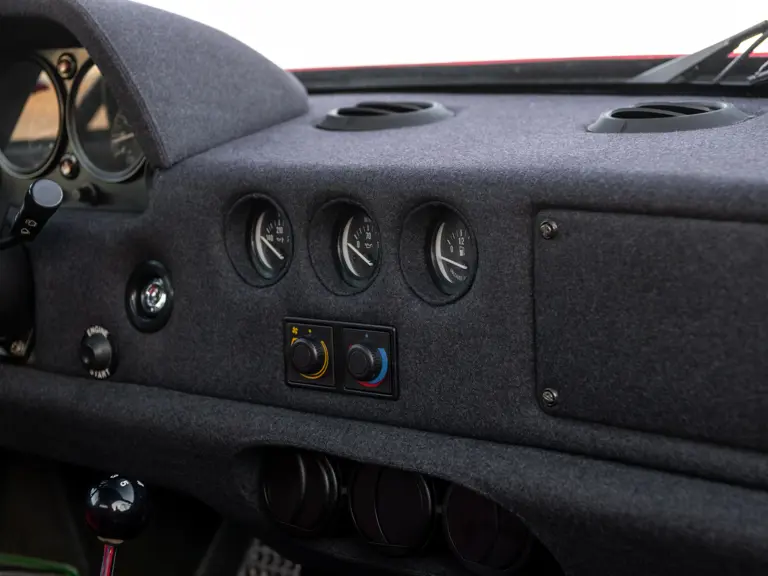


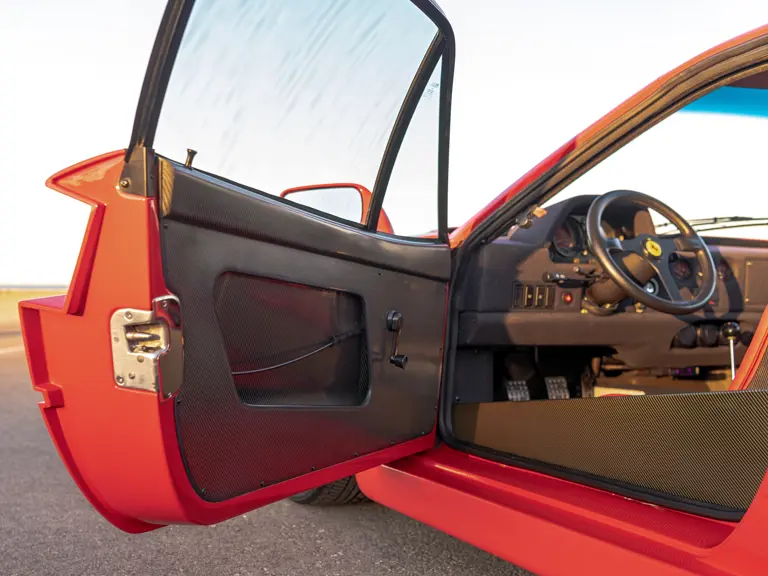

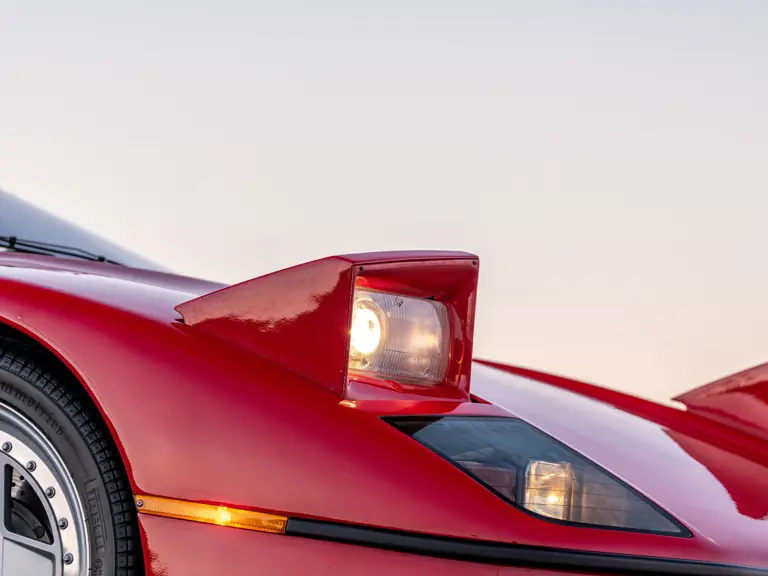
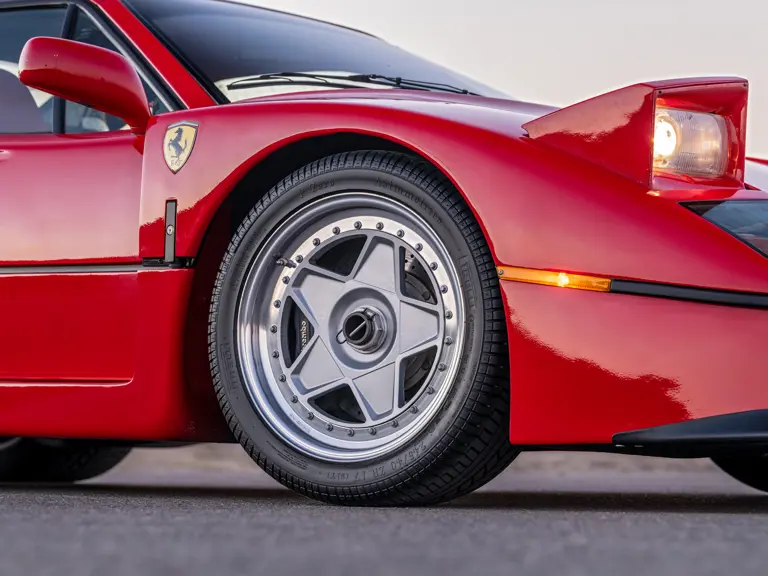
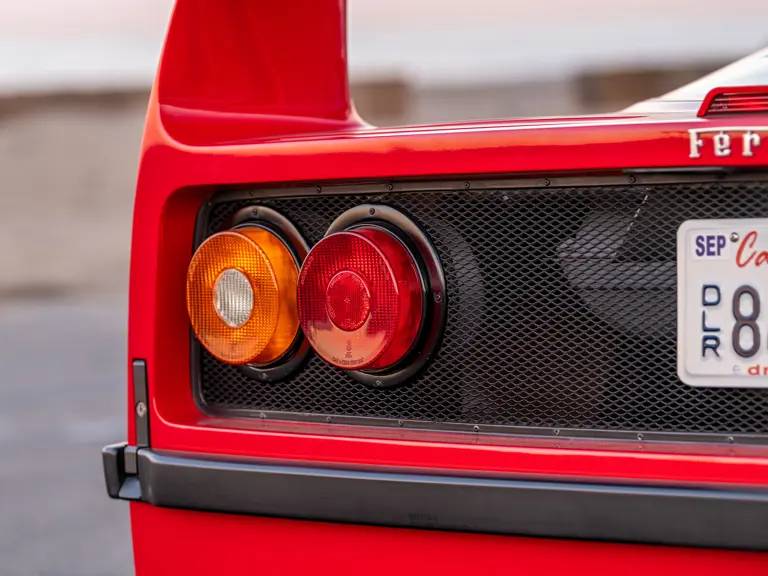
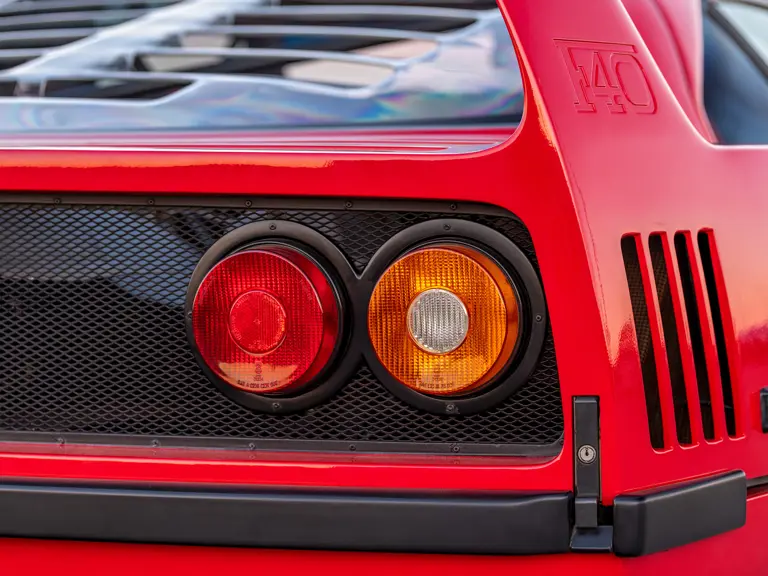
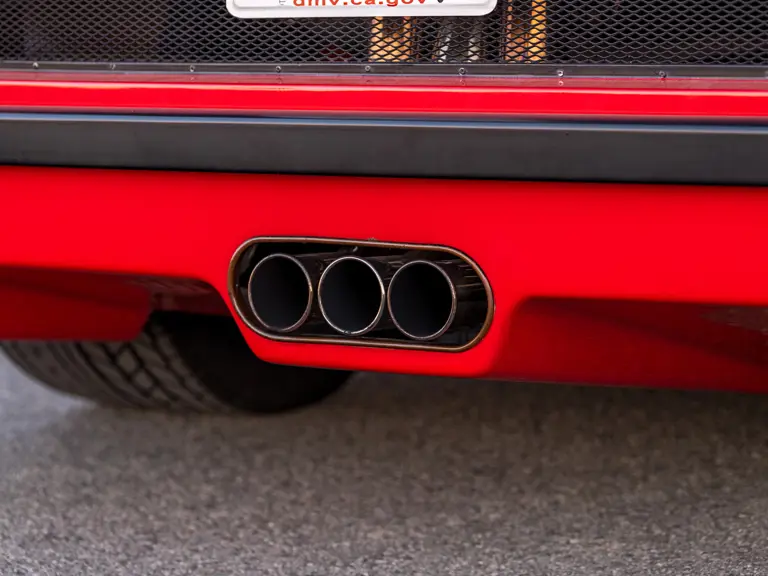

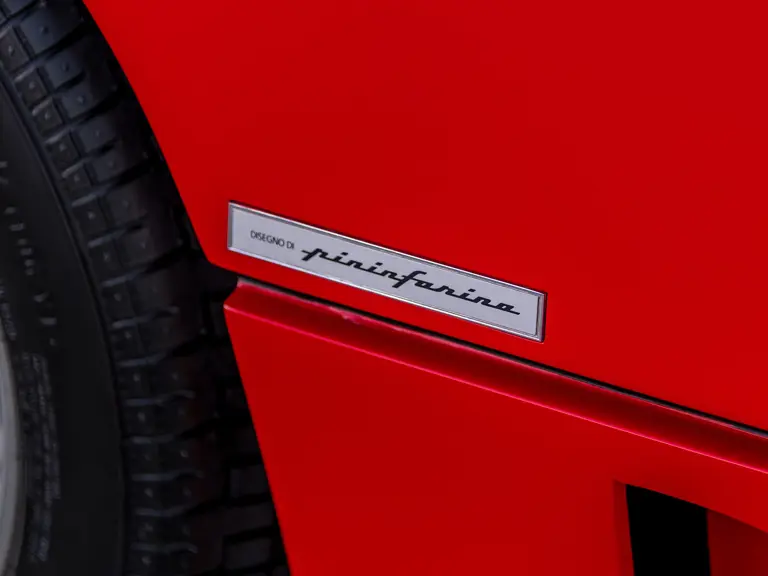
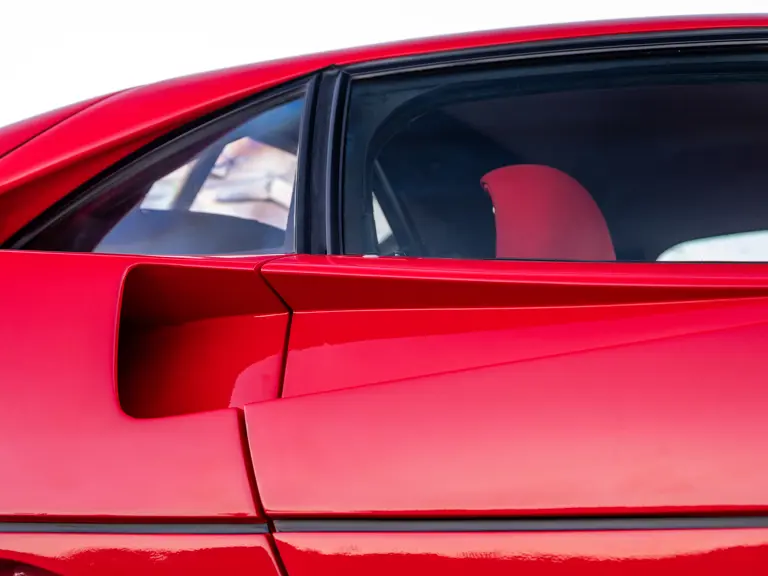
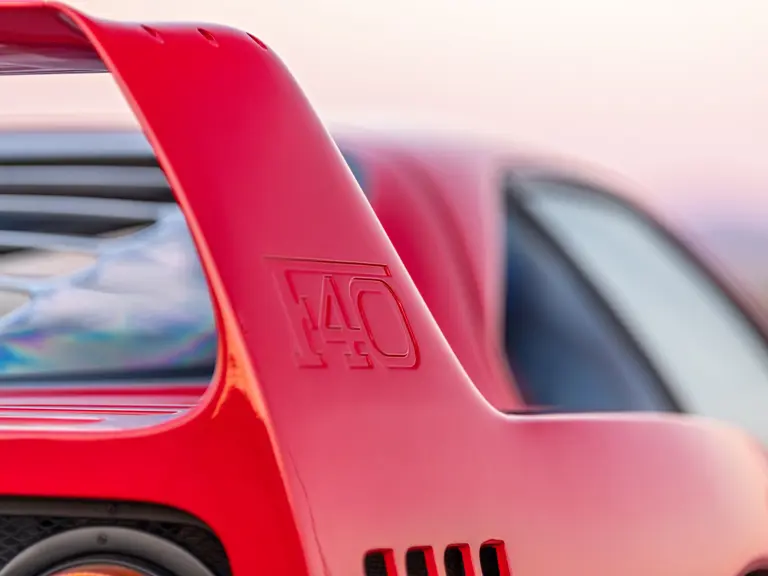
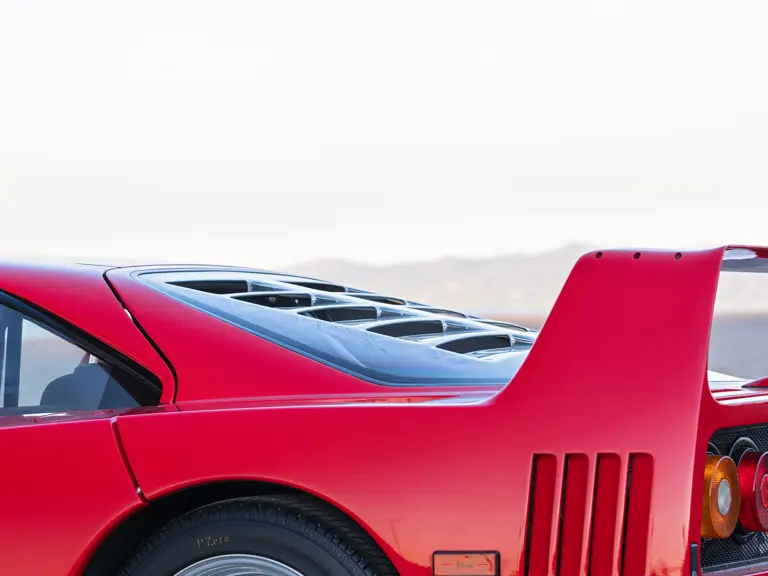
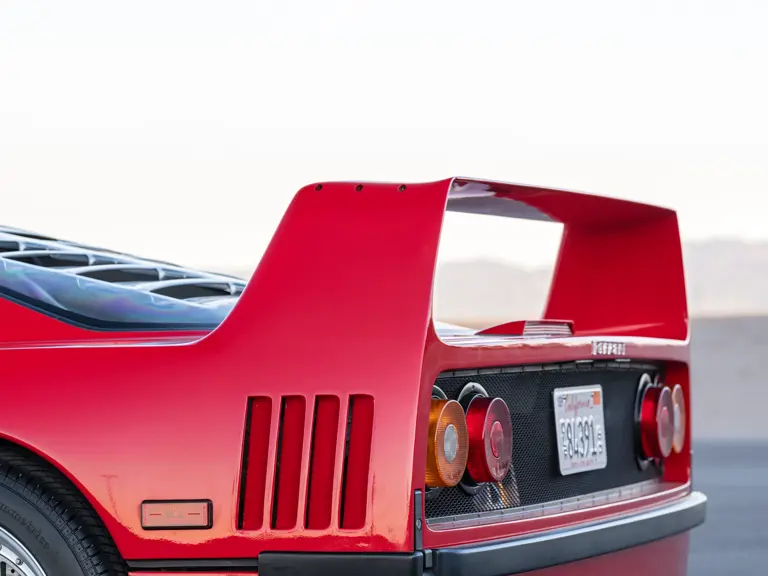
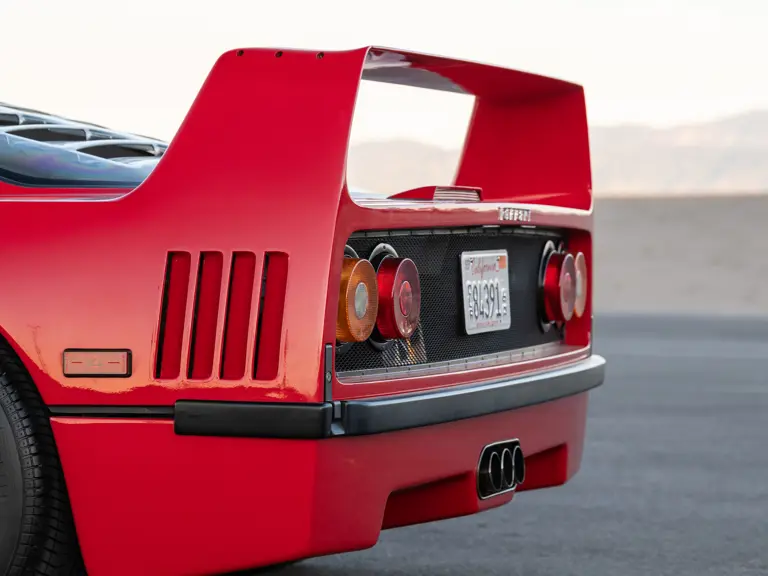
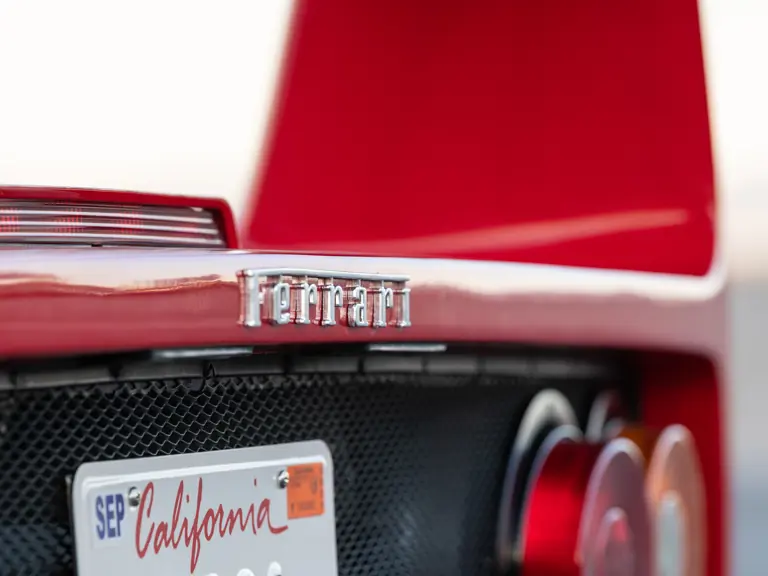
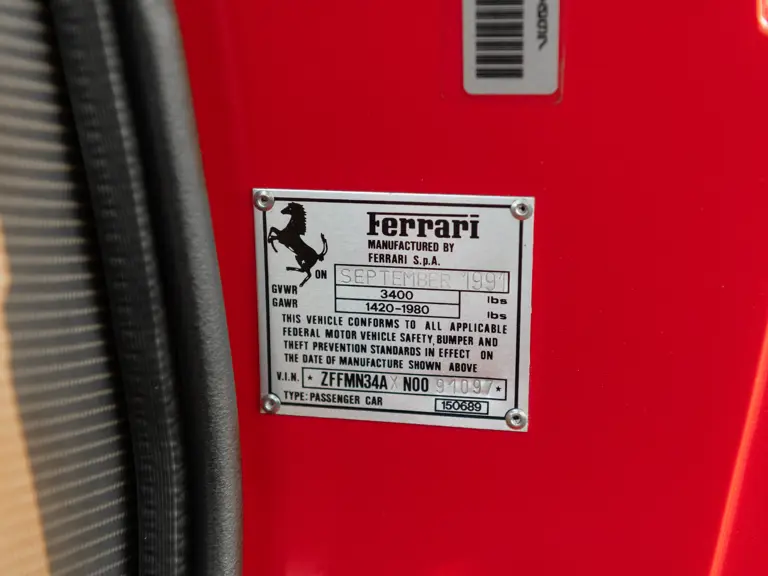
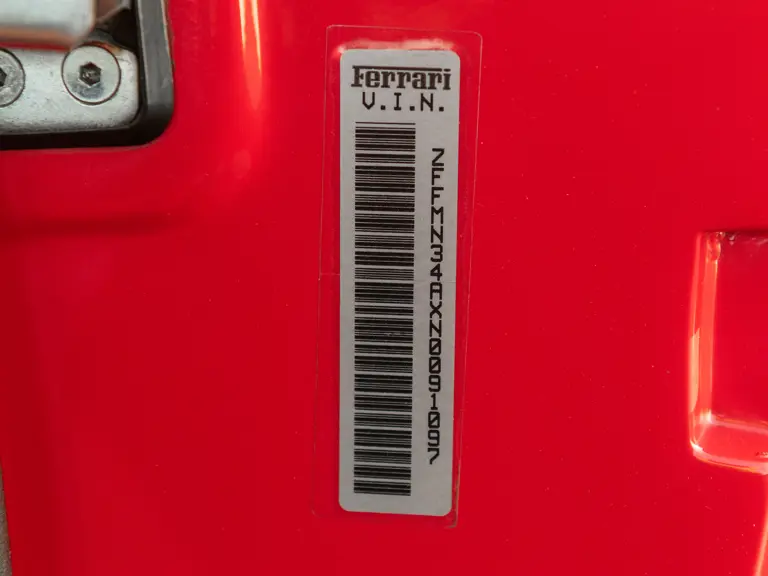
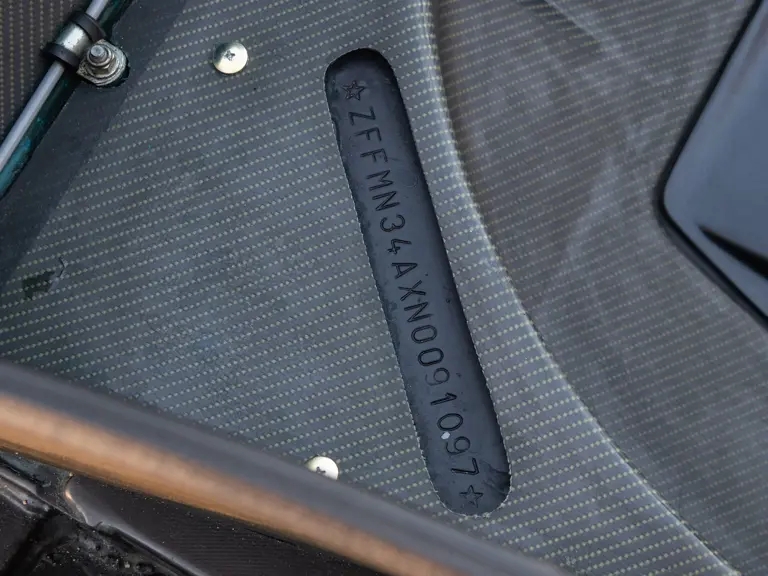
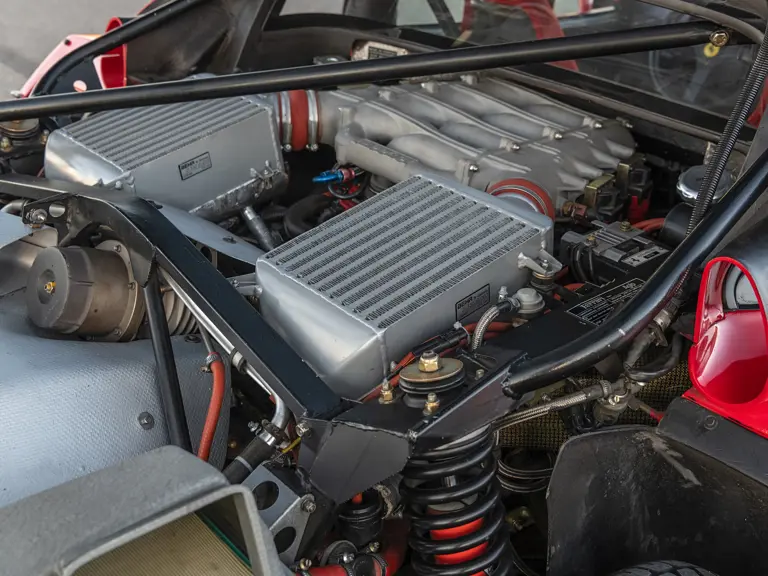
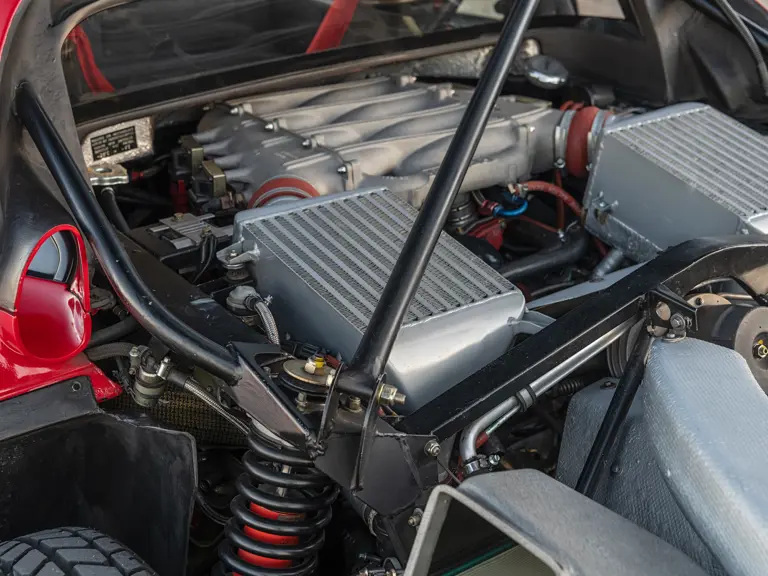
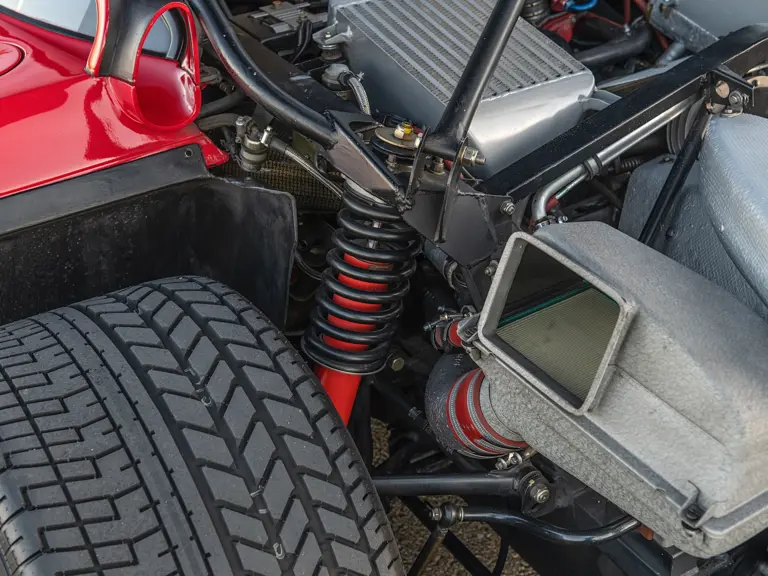

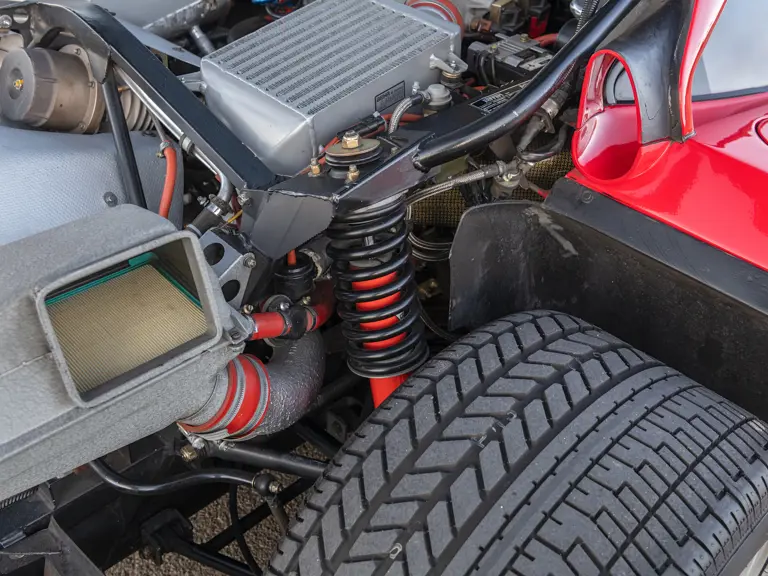
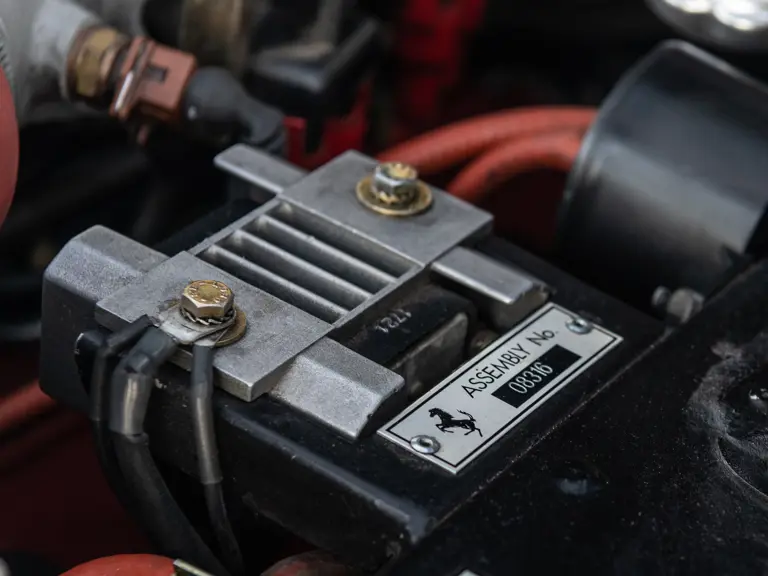
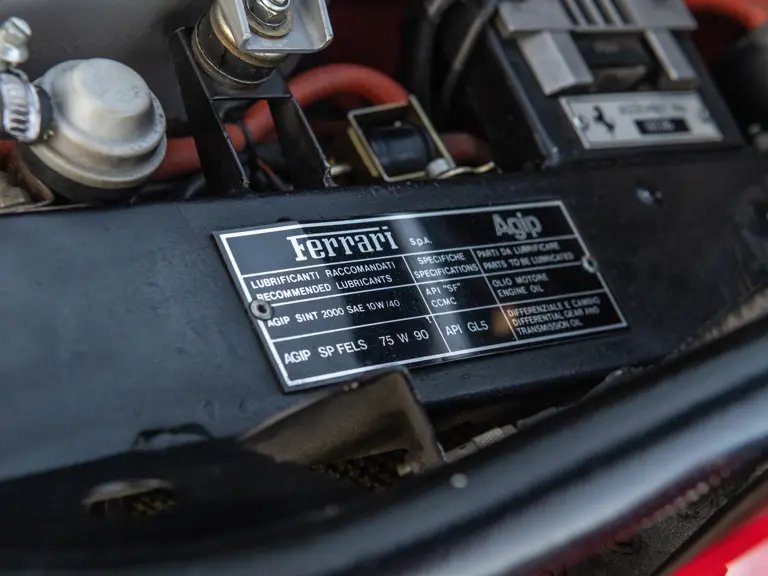
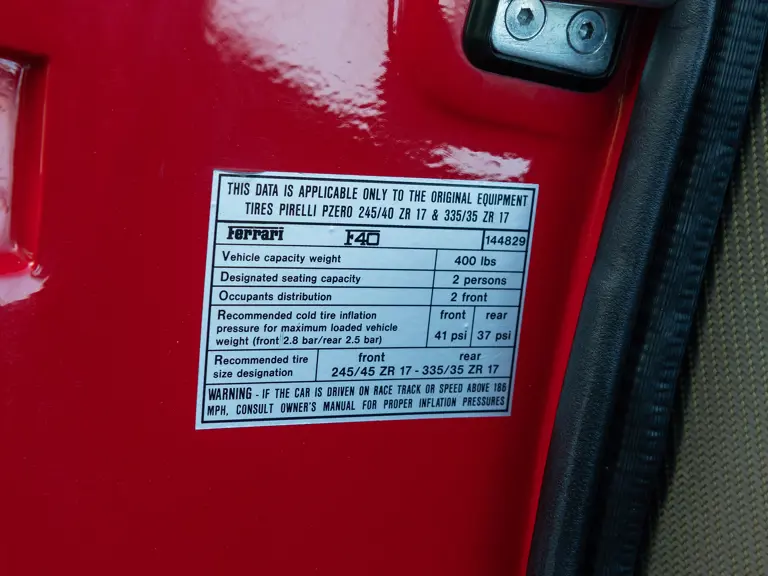
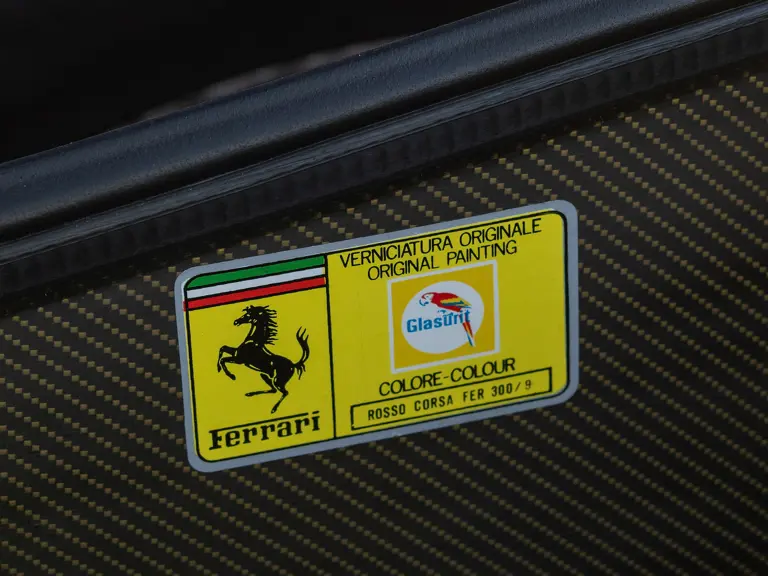
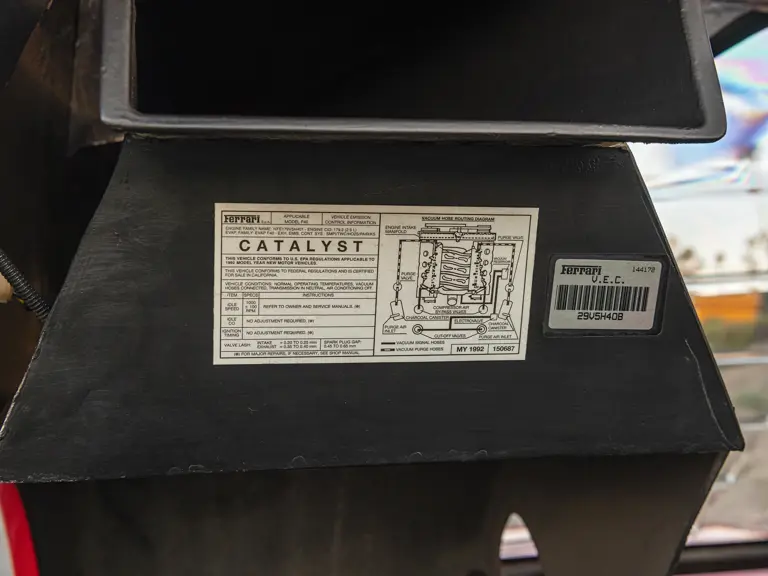
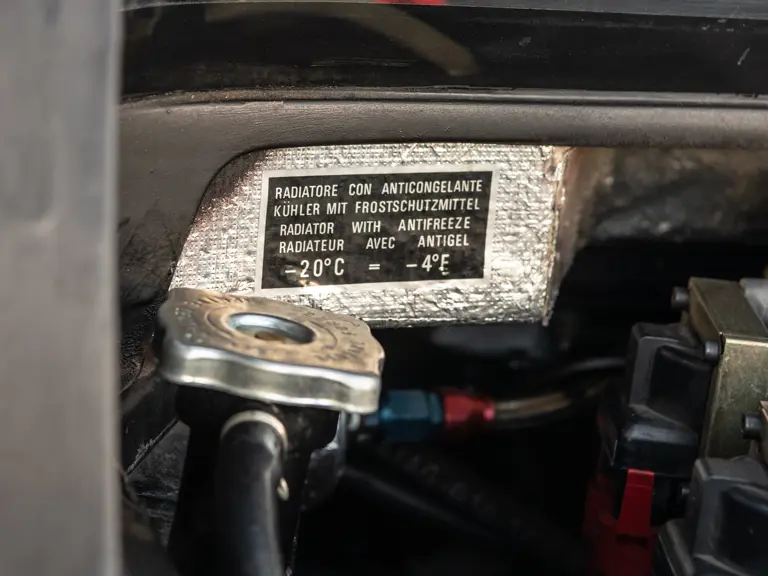
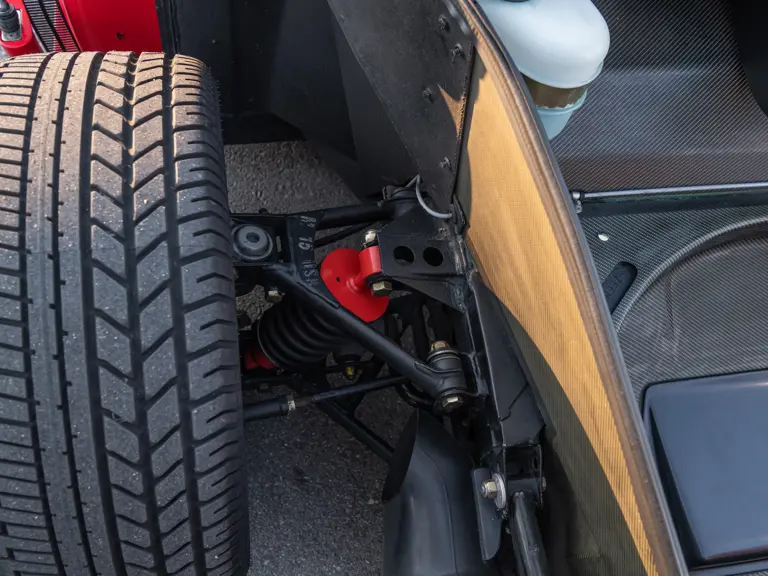
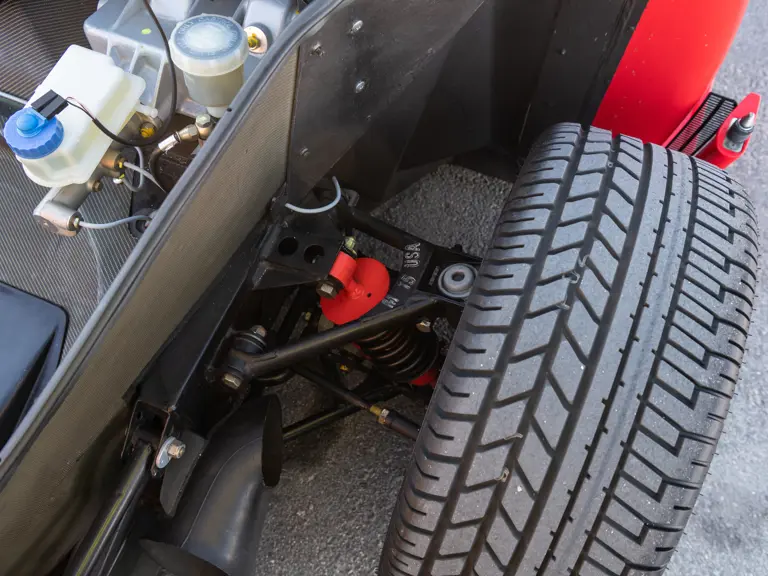
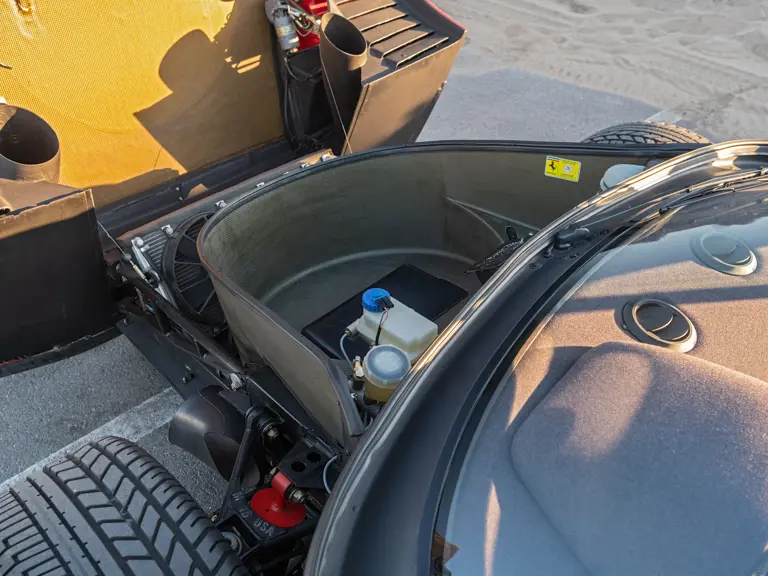
 | Monterey, California
| Monterey, California
